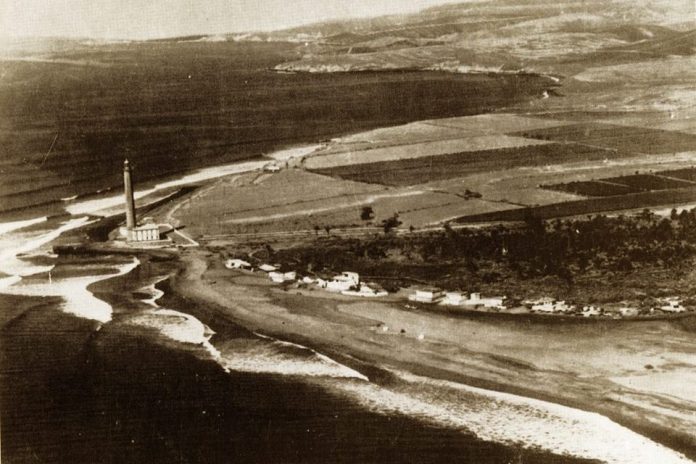The Canary Islands are often rich in public announcements and presentations to the press, but whether well-meaning projects will actually happen is quite another matter. Over the years, I have attended many lengthy press conferences, and often with impressive audio-visual presentations from earnest members of island governments, city mayors and experts about exciting and imaginative plans for the development of these islands.
Sadly, there are now numerous abandoned projects that litter my ‘Intending Projects’ folder, which include an island railway, a futuristic spaceport and a Chinese Village, to name just three on my list. Sadly, these are merely dreams that have disappeared into the ether, which I doubt will never actually come to fruition.
The impact of the recession and a changing political landscape are usually the main excuses deployed when the authorities are questioned about their failure to deliver. Still, they always provide an interesting story and a photo opportunity. Does it actually matter that they will never happen? Probably not; after all, in time, these projects will be forgotten.
Cynicism aside, I was delighted that the much discussed and planned renovation of the Maspalomas lighthouse finally happened this week. Known to the locals as ‘El Faro de Maspalomas’, this building finally reopened to the public after a ten-year delay, which this time was blamed upon the activity of termites; well, that’s a new one.
Looking at old maps and photographs of these islands always fascinates me to see that the south of Gran Canaria, as we currently know it, did not exist. There were only small clusters of fishermen’s dwellings on the coast.
It was the lighthouse that stood proudly over barren land as the most significant building in the south of the island. Later, thanks mostly to European Union funding, the current network of roads and tunnels were built that allowed remote parts of the island to be connected, followed by the rapid development of the sun-drenched tourist resorts that we see today.
This lighthouse appears in nearly all brochures and publicity material relating to holidays in Gran Canaria. It is one of the oldest lighthouses in the Canary Islands, as well as the tallest masonry lighthouse. This lighthouse is still in operation, and now regarded as a Site of Cultural Interest.
It was originally built by the Las Palmas Port Authority, and designed by the famous local engineer, Juan León y Castillo. Building started in 1861 and took 28 years to complete, since all the building materials had to be brought by ship. The lighthouse shone its first light in 1890 to help ships on routes between Europe, Africa and America.
The tower is 58 metres high, and was first illuminated in 1890 to guide ships crossing the Atlantic Ocean with its light that could be seen for 19 nautical miles.
The building now houses an impressive exhibition of five hundred years of island history, showcasing island products, culture, as well as the island’s rich and varied landscapes. The lighthouse now includes a tourist office, handicraft shop and an ethnographic centre that tells the island’s story from the Fifteenth to the Twentieth Century, the aboriginal era, as well as writings from travellers who passed through the Canary Islands.
The duties of the lighthouse have now shifted away from guiding ships crossing the Atlantic to boasting a new shining light that enhances lighting of the walkway in the evenings along the Meloneras seafront. It is a route taken by thousands of people each day who wish to enjoy magnificent ocean views, shopping, restaurants as well as magnificent sunsets. The light of this impressive building continues to shine brightly, as well as now sharing its story.
If you enjoyed this article, take a look at my websites: http://barriemahoney.com and http://thecanaryislander.com or read my latest book, ‘Letters from the Canary Islands’ and Spain’ (ISBN: 9780995602731). Available in paperback from Amazon, Waterstones and all good bookshops, as well as Kindle editions.
Join me on Facebook: @barrie.mahoney
© Barrie Mahoney





